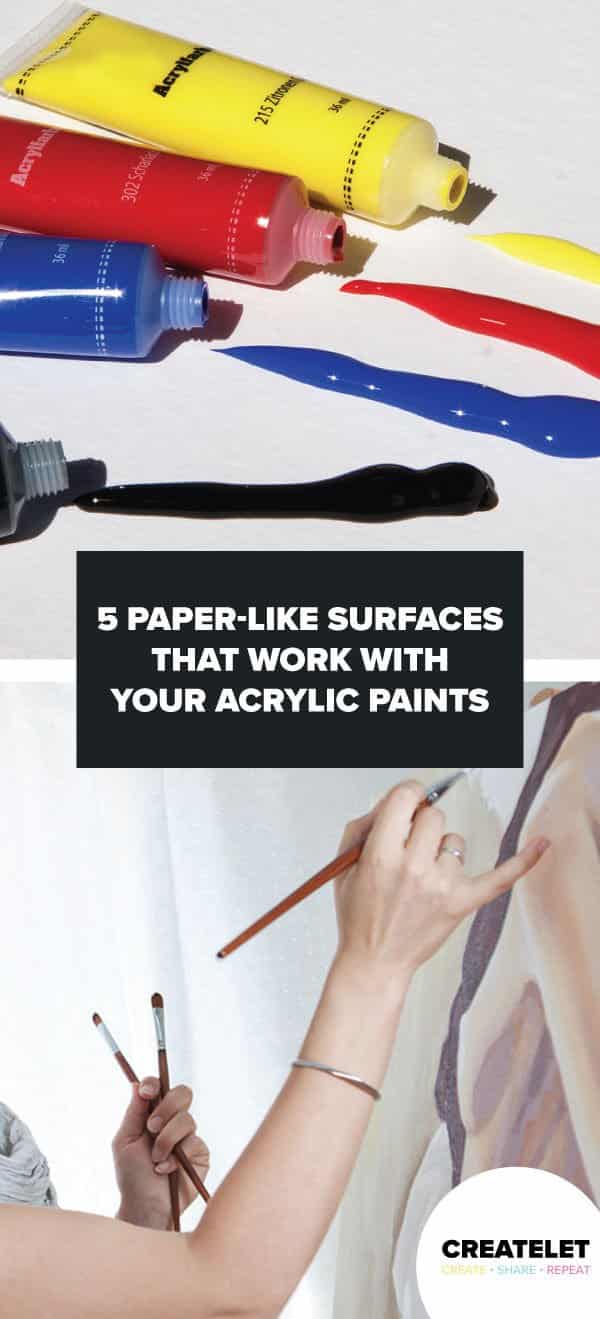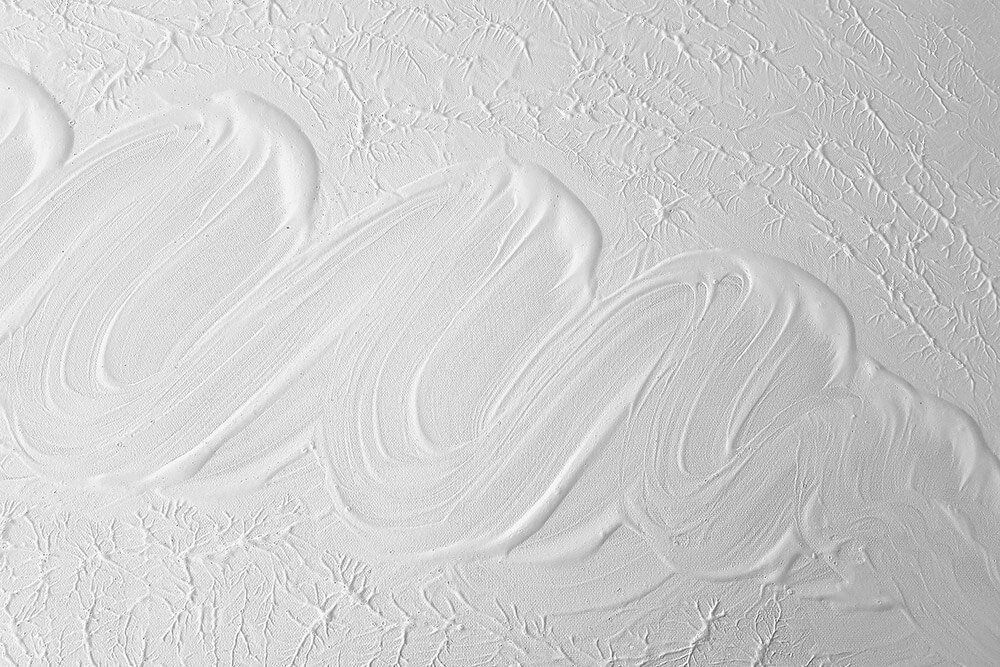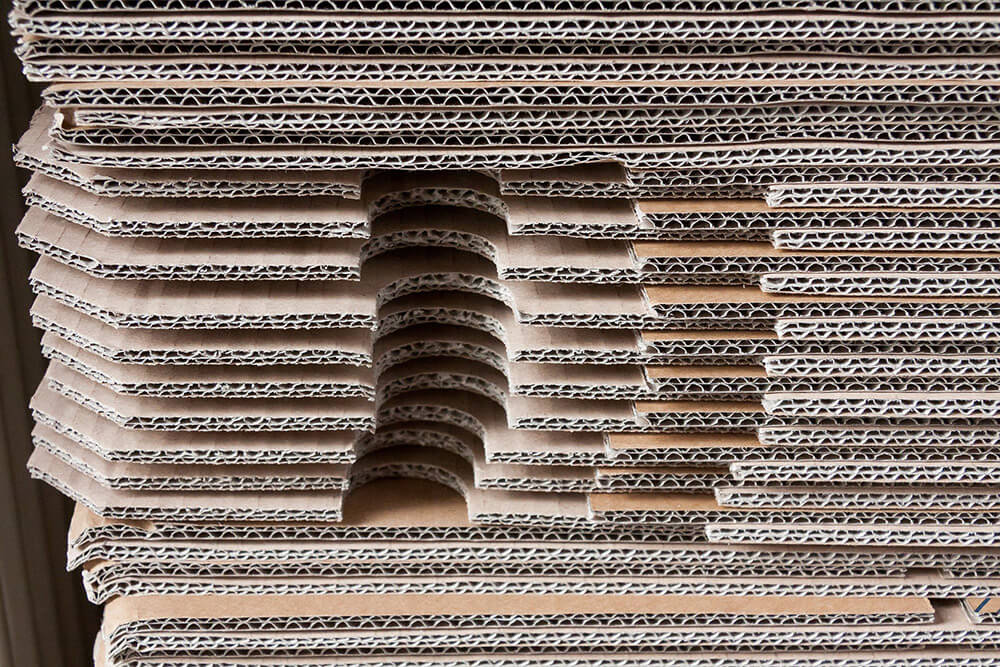Whether you are an acrylic artist that is looking to take their studio beyond the four walls and paint plein air, or are simply looking for a new surface to paint on, paper can make an excellent choice.
But here’s the deal:
You can’t just use any type of paper.
Instead, you need to use one that can withstand the lofty weight of acrylic.
As you are likely already aware, acrylic dries both incredibly fast and hard.
In order to prevent any pronounced cracking for your finished piece, you have to have a keen eye for selecting the right paper surface that will work with your existing acrylics.
In today’s article we are going to not only go over some really great papers you can use with your acrylic paints the next time you are in the studio, but we are also going to talk about some necessary prep work you should be doing as well.
This will not only let the acrylic lay effortlessly, but will also ensure you don’t blow your budget on a fast absorbing surface.
But before we get into all the details, here is a quick note on why you might want to consider paper as your preferred surface when using acrylic paints:

Table of Contents
Key Advantages And Disadvantages Of Using Acrylic On Paper
While canvas may reign supreme for major pieces of both oil and acrylic mediums, paper is a great intermediary surface should you be testing out new techniques, subjects, or just generally looking to pinch a few pennies on your monthly artistic budget.
But it goes beyond just saving a few pennies…
…if you are a budding artist in a highly dense area like NYC where every square inch of real estate is fought over…
…or…
…find that your studio is bursting at the seems even if you live in a bit more spacious of an area, paper is a huge space saver, especially if you are coming from a background of regularly using stretched canvas.
While the compact and light form factor of paper makes this a surface that is quite alluring, we would be remiss if we didn’t at least mention a few key drawbacks:
When it comes to acrylic paints on paper, you MUST select one that is the right weight…
…and this is a point worth stressing.
Why?
Well too heavy of a paper and you are likely going to be wasting your money on a couple of fronts.
First off, heavy weighted paper does tend to cost a fair bit more than those of lesser weights.
But secondly, and perhaps most importantly to you is the waste of acrylic paint.
Overly absorbent papers will completely suck up all the paint that is loaded on the end of your brush much quicker than a primed canvas.
Therefore, you will want to make sure that you check out our suggestion below on some papers that we found work better for most folks that use acrylic regularly.
Now just a quick word for artists who like to take their wares on the road with them:
Paper surfaces are great for plein air paintings.
Their naturally lighter weight make it perfect for any portable studio.
However, there’s a catch:
When outdoors, you have to make sure you always have a few other supplies with you on hand at all times.
Here’s the essentials:
A board to keep your paper lying flat while you paint.
Tape or clamps to ensure your paper doesn’t fly away while you are painting (this happened to me once and I never forgot tape when leaving the house ever again).
But once you are aware of these common traits of using your beloved acrylic paint with paper, you will be ready to begin painting some of your best work immediately.

Is Prep Work Necessary When Using Acrylic Paint On Paper?
In short, perhaps.
Here’s why we can’t give you a non-committal answer:
It really does depend on the results you are seeking from your next painting.
If you are looking for a highly absorbent surface that doesn’t let your paint budge once its placed, then no, you don’t have to prep.
Most important around the absorbency aspect however is going to pertain to bleeding.
Some artists who try to push the boundaries on a cartridge paper or even watercolor paper when using acrylics may simply need to prime it beforehand to ensure there is no deterioration among the fibers of the paper as well as to ward off any wrinkling or warping…
…which may leaded to a finished piece that will crack as it dries.
Where are we going with this?
It’s important to test out your work and do some quick paintings on a new surface to see what the results will be.
The last thing you will want to do is to spend an extended period of time on a piece only to find it deteriorates right before your eyes.
Here’s the deal though:
It goes WAY beyond just simple absorbency issues…
Some artists may be looking for a certain texture or tooth from their surface that reminds them of a traditional canvas piece even though they are painting on paper.
So, what should you use as your primer?
A simple coating of gesso on both the front and back of the paper should be more than sufficient to prevent bleeding of the acrylic while also giving you a great texture to work with.
If you don’t use gesso currently, you can typically pick it up at online retailers or at your local art supply shop.
We wouldn’t recommend going to hardware store to pick up gesso or any type of primer as a substitute.
While it may skew a bit cheaper, these primers are typically suited for outdoor use or in well ventilated areas and often strongly recommend that you wear a respirator mask to ensure there is no long-term damage to your lungs.

Types of Paper You Can You For Your Next Acrylic Painting
Here are a few common surfaces that many acrylic artists find themselves using for their pieces:
Drawing / Cartridge Paper
Drawing paper, or also referred to as cartridge paper in countries like UK and Australia, will be your typical standard sketch or drawing paper you may use with a pencil or pen.
Now you are probably wondering how in the world can standard drawing paper have enough backbone to support acrylic…
…and you would be right!
Your standard piece of drawing paper that you pick up at an office supply store or even drug store is likely not going to be sufficient in holding your much thicker and dense acrylic paints.
Here’s the deal though:
In order to get a drawing paper that won’t buckle under the pressure, you need to look at the lbs or gsm.
Both of these metrics measure the same thing, however will differ depending on the market that you buy your paper.
Essentially anywhere but the United States, paper will be measured in GSMs (Grams Per Square Meter).
When it comes to painting with acrylics, if you are looking for the best in backbone and durability, then we would suggest going with a paper with plenty of heft.
Therefore, we recommend artists go with papers of at least 185lbs (or 400 gsm).
Anything less than this should have a primer applied in order to ensure structure of the surface.
Synthetic Paper
Aside from your standard drawing paper, one great alternative is synthetic paper.
Specifically, we really like this one from Yupo.
While its marketed as a watercolor paper, it can work flawlessly with your acrylics as well.
Instead of being fabricated from wood and other natural fibers, this synthetic board is 100% polypropylene.
This makes the surface not terribly absorbent (which effectively wastes a lot of paint), but also is completely resistant to tears and wrinkling as you layer on the acrylic paint.
Furthermore, these synthetic papers are great for long term preservation as well. They have been designed to be pH-neutral so you won’t see any long-term deterioration of the surface – this can be great for artists who display their work privately or do commissioned pieces.
The only downside to this particular surface is its price point. Typically costing roughly $5 a board, it can be a bit out of reach for some artists who are migrating to paper for budgetary reasons.

Cardboard
On the complete other end of the price point (and essentially free), is cardboard.
Especially if you find yourself shopping online frequently (or a quick trip to the liquor store), you can usually find a cardboard box everywhere you look.
Just simply take a box cutter and cut out your desired surface size.
If you can get one without any bends or wrinkles, all the better.
Just a quick note about this surface:
With cardboard, you will want to apply a coat of gesso to both the front and back. Not only will this help make a slightly flimsy piece a cardboard a bit more rigid, but it will also help to reduce the waste of your paint.

Heavy Watercolor Paper
While we talked about drawing (cartridge) paper above, we also want to take a minute to cover watercolor paper as well.
This highly absorbent surface can be perfect for some artists out there.
However, what really catches ours and many others artists’ attention is the texture of the surface itself.
Unlike the relatively smooth surface of drawing paper that carries very little grit, watercolor paper is perfect at catching your acrylic as it comes off the tip of your brush.
But, that’s not all…
Watercolor paper is designed not bleed through when its used. This high absorbency allows you to safely use acrylic paints without requiring the use of gesso or any other primer.
Just like drawing paper, watercolor does come in varying weights, therefore we would recommend skewing towards the higher lbs (or gsm) in order to ensure the best performance for your acrylics.
Acrylic Paper
Yes, this is a thing!
While you might have come here looking for papers that are used for other mediums, manufactures like the French based company Canson, make papers specifically geared towards artists who use acrylic.
So how does it fair?
Well, if you regularly visit the popular online art forum communities, you will often find artists there always recommending Canson acrylic paper pads above all else…
…and with good reason.
With both an affordable price point coupled with terrific results (i.e. no deterioration of the surface, wrinkling, etc.), it really is one of the best acrylic papers on the market.
While a bit tougher to find locally (at least we couldn’t find it at our local art store), you can usually find Canson Acrylic Paper Pads at online retailers like Dick Blick.
If you are looking for a new surface for your acrylic paints and one that is highly regarded by many other artists, then you should give this offering by Canson a shot.
Is That Really All For Paper Surfaces You Can Use With Acrylic
With new synthetic surfaces constantly popping up in the marketplace coupled with different DIY solutions that many creative artists may employ, we only wanted to include a few of the most popular paper surfaces that 99% of artists use.
If you would like to add any options to this list, just simply send us a note and we will consider adding it to the list above.